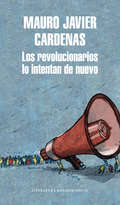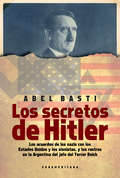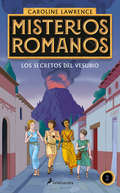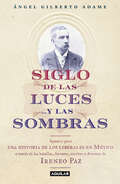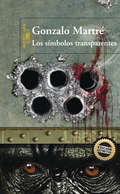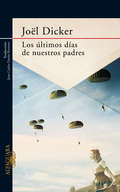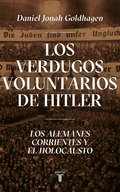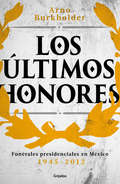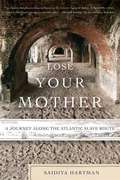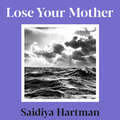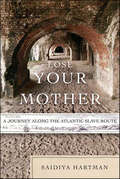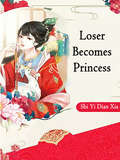- Table View
- List View
Los revolucionarios lo intentan de nuevo
by Mauro Javier CárdenasEspléndido debut literario que destaca por una prosa rítmica y un estilo virtuoso que busca dramatizar el inmenso presente que lo abarca todo. Una novela que inevitablemente evoca la obra de Cortázar, Antunes, Joyce o Bolaño, con quienes ha sido comparado, posicionándolo en Estados Unidos como la gran revelación literaria latinoamericana de los últimos años. <P><P>Después de casi diez años como expatriado en San Francisco, donde andaba hecho el artista, Antonio cree que puede regresar a su Guayaquil natal y salvar al Ecuador de la pobreza y la injusticia. <P>Leopoldo le ha llamado para que se lancen juntos a la presidencia en las próximas elecciones. Ambos amigos de infancia, que compartieron fervores mesiánicos en el colegio San Javier, tienen la oportunidad de recuperar su idealismo frustrado y convertirse en el futuro de su pueblo, a pesar de ser ellos mismos hijos de funcionarios públicos que en su día contribuyeron al saqueo del país. <P>Mientras tanto, al otro lado de Guayaquil, Rolando y Eva intentan cambiar al Ecuador a través de obras de teatro y programas de radio, aunque los tórtolos saben que sus intentos son fútiles y ridículos, como lo es casi todo en el mundo. <P>La historia política y social del Ecuador de las últimas décadas -la corrupción, el populismo, los desaparecidos, la hipocresía de los que se creen su élite- sirve de marco a una novela que plantea el carácter absurdo pero necesario de las creencias revolucionarias de juventud que los años erosionan.
Los robos de Rutland Place (Inspector Thomas Pitt #Volumen 6)
by Anne PerryTras un velo de irreprochable virtud, la alta sociedad londinense oculta una complicada red de adulterios, dudosas reputaciones, chantajes e incestos. La sexta novela de la serie del inspector Pitt Una muerte por envenenamiento trastoca una rutinaria investigación en una aristocrática zona de Londres. ¿Se trata de un accidente, de un suicidio? ¿O acaso se un asesinato? Averiguarlo será el objetivo del tenaz inspector Pitt y su perspicaz esposa Charlotte.
Los secretos de Connaught Square (Inspector Thomas Pitt #Volumen 23)
by Anne PerryAnne Perry vuelve a sumergirnos en una extraordinaria historia de intriga política, pasión y conflicto internacional en el corazón de la Inglaterra victoriana, protagonizada la brillante pareja de investigadores formada por el inspector Thomas Pitt y su esposa Charlotte. El vigesimotercera novela de la serie del inspector Pitt Algo grave sucede para que Thomas Pitt haya sido convocado con tanta urgencia por el jefe de los servicios secretos británicos. La noche anterior, un joven y prometedor diplomático fue asesinado en el jardín de una mansión londinense: la residencia de la misteriosa amante egipcia de un importante ministro del gabinete. Y pese a sus protestas de inocencia, acaba de ser detenida por homicidio. ¿Por qué un caso que solo debería interesar a la policía y, en principio ya resuelto, requiere investigación extraoficial llevada con la máxima discreción? En busca de una verdad que podría comprometer a las más altas esferas, Pitt deberá viajar a Alejandría, una ciudad vibrante y turbulenta, donde la semilla de la rebelión contra los británicos está siempre latente.
Los secretos de Hitler: Los acuerdos de los nazis con Estados Unidos y los sionistas, y los rastros en Argentina del jefe del Tercer Reich
by Abel BastiBasti amplía su brillante investigación sobre los presuntos pasos de Hitler en su exilio en la Argentina y documenta las alianzas entre el Tercer Reich y norteamericanos y sionistas. En este libro Abel Basti lleva al límite su combate contra la historia oficial de la Segunda Guerra Mundial. El autor empieza preguntándose: ¿Es posible que la historia del siglo XX haya sido muy diferente a la versión que nos enseñaron durante años? ¿Y si los sectores que creíamos enemigos ideológicos -y que terminaron peleando en el campo de batalla- en realidad no eran tal cosa? Basti corre el velo de un pacto nazi-sionista mediante el cual se sentaron las bases del Estado judío, hecho que habrían de reconocer los dirigentes que trabajaron para fundar Israel. Hitler además pactó con Stalin, en el inicio de la Segunda Guerra: ambos trabajaron juntos para repartirse una parte de Europa y sus países mantuvieron fructíferas relaciones comerciales. Y, cuando terminaba el conflicto, el Führer supo negociar su inmunidad y la de su entorno con militares norteamericanos. ¿A cambio de qué? Esta es la gran pregunta y la respuesta resulta sorprendente. Una fantástica serie de revelaciones que, como no podía ser de otra manera, termina con Adolf Hitler refugiado en la Argentina.
Los secretos de la Capilla Sixtina
by Benjamin BlechPrepárese para desaprender todo lo que creía saber sobre la Capilla Sixtina y las obras maestras de Miguel ángel. Este libro procurará desplazar siglos de prejuicio, censura e ignorancia de uno de los tesoros del arte más famosos y queridos del mundo. Hace quinientos años Miguel ángel comenzó una pintura que se convirtió en una de las piezas de arte más famosas del mundo: el cielorraso de la Capilla Sixtina. Todos los años, millones de personas se acercan a ver el cielorraso Sixtino de Miguel ángel, el fresco más grande del mundo en la más sagrada de las capillas cristianas; sin embargo, no hay una sola imagen cristiana en esta vasta, magnífica obra de arte.
Los secretos de topacio (Joyas de la nobleza #2)
by Catherine BrookLa segunda entrega de la serie «Joyas de la nobleza». Adam tiene ahora una nueva misión: descubrir todos y cada uno de los secretos que se esconden bajo la dura coraza de Topacio Loughy. La lengua de Topacio es tan afilada como bella es su cara. No cree que el amor esté hecho para ella y, sinceramente, lo considera una estupidez. Eso de volverse esclava legal de un hombre no entra en sus planes, y no piensa casarse nunca. Sin embargo, lo que no espera es que ese hombre fastidioso decida pegarse a ella como una sanguijuela y que, para colmo, haya conseguido que el mismo príncipe ordene su matrimonio. Pero si cree que va a salirse con la suya está muy equivocado, ella le demostrará que es la peor persona con la podría querer casarse. Adam, duque de Ruthan, conocido como Adonis de pelo negro, regresa de Francia al terminar la guerra, pues con ella termina también su trabajo como espía de la corona inglesa. Piensa que el futuro le depara una aburrida vida de libertinaje y entretenimiento con muchachas debutantes... Hasta que vio a Topacio. Desde la primera vez que pone los ojos en esa hermosa mujer a la que muchos llaman bruja, queda absolutamente prendado. Por eso, cuando se le presenta la oportunidad de casarse con ella no duda en aprovecharla. ¿Qué mejor esposa que esa intrigante joven que parece ser mucho más de lo que deja entrever? La víbora ha encontrado a alguien inmune a su veneno...
Los secretos del Congreso
by Gabriel SuedLos secretos del Congreso es el resultado de un esfuerzo por radiografiar, con honestidad y compromiso con el lector, un lugar inigualable del sistema político argentino. Los secretos del Congreso es un pase VIP para recorrer los pasillos del Palacio, aprender su idioma y descifrar sus reglas. Para entender lo que pasa en la institución más importante de la República y, a la vez, una de las más desprestigiadas. Con información precisa, este libro responde a preguntas siempre presentes en las oleadas de indignación popular: ¿Cuánto trabaja un legislador? ¿Cuánto le pagan? ¿Cuántos empleados tiene a su disposición? Con soporte académico, también intenta establecerse cuánto poder tiene el Congreso. Otros interrogantes guían el recorrido: ¿Qué artículos del reglamento se violan a diario? ¿Quiénes no hablaron nunca en el recinto ni presentaron proyectos de ley? ¿En qué consisten las negociaciones secretas para conseguir el quórum o para torcer el voto de un legislador? A partir de la reconstrucción de hechos reales, Gabriel Sued nos muestra la trastienda de debates como la reforma del sistema previsional y la legalización del aborto. Este libro incluye además un retrato íntimo de las dos figuras más destacadas del Congreso en los últimos treinta años: Miguel Ángel Pichetto y Elisa Carrió. Dos caras muy distintas de la misma moneda. Un senador que hizo del Palacio su territorio político. Una diputada que construyó su poder mirando hacia afuera. Un senador que siempre fue oficialista, incluso cuando fue opositor. Una dirigente que siempre fue opositora, también cuando integró el oficialismo.
Los secretos del Gran Maestro entre música y masonería
by Paolo Nuti Heredia RojasGiacomo Puccini y la masonería: ¿que vínculo hay entre uno de los mas grandes compositores italianos de todos los tiempos y la controversial institución? En un inteligente tejido entre novela y autobiografía el autor nos ofrece anécdotas personales y referencias históricas, levantando dudas, poniendo interrogantes, y acompañando al lector en un fascinante viaje de descubrimiento a los secretos del Gran Maestro.
Los secretos del Vesubio (Misterios romanos #Volumen 2)
by Caroline LawrenceLos secretos del Vesubio es el segundo volumen de la serie «Misterios romanos», que se inició con Ladrones en el foro. Además de disfrutar de divertidas historias de detectives, los niños aprenderán cómo era la vida en la antigua Roma. Flavia Gémina navega rumbo a la bahía de Nápoles acompañada de sus amigos Jonatán, Nubia y Lupo. Van a pasar el verano con un tío suyo que vive cerca de Pompeya, pero, no bien llegan, los temblores sacuden la tierra, los animales se comportan de modo extraño y lagente sueña con un desastre inminente. Es el Vesubio, que entra en erupción y pone a los cuatro niños en un terrible peligro. A pesar de todo, la inquieta pandilla se verá pronto implicada en la resolución de un enigma que puede llevarles hasta un gran tesoro. los secretos del vesubio;vesubio;segundo libro;libro 2;segunda entrega;misterios romanos;literatura infantil;historia;libros de historia para niños;historia para niños;roma;roma para niños;libros para niños;literatura infantil y juvenil;narrativa joven
Los siglos de las luces…y las sombras: Apuntes para una historia de los liberales en México a través de las batallas, fervoeres, escritos y derrotas de Ireneo Paz
by Ángel Gilberto AdameA pesar de sus paradójicas luminarias, la historia de México a veces es cruel con sus caudillos. Los arrincona, los hunde en empresas destinadas al fracaso, los arrumba en el olvido; prueba de ello es la mítica figura de Ireneo Paz, emblema de los liberales mexicanos, militar, poeta, crítico de su tiempo, novelista, editor vehemente y al final de sus días...solo un fantasma. Ángel Gilberto Adame ofrece en esta obra monumental un recuento súbito, espléndidamente documentado de los liberales en México a través de las acciones, disputas, publicaciones y conflictos de Ireneo Paz, quien pleno en sus convicciones / contradicciones expuso sus ideales y su honra al participar militarmente contra la invasión francesa desdeñada por Victor Hugo; cuestionó con viveza los mandatos de Juárez y Lerdo de Tejada; buscó la aprobación y cofradía de Porfirio Díaz, a quien creyó estabilizador de la patria; cedió al hechizo sombrío de Victoriano Huerta y, para él únicamente fue, al final de sus días, el banquete de la desolación.Siglo de las luces... y las sombras sitúa de forma concluyente a Ireneo Paz lo mismo en el campo de batalla que en el duelo donde perdió la vida el hermano de Justo Sierra; en la fundación de periódicos aguerridos que en la redacción del Plan de Tuxtepec que encumbró al porfirismo; en la cárcel y condenado a muerte que en el macabro homenaje al poeta Manuel Acuña.El trabajo de Adame es una indagación lúdica y límpida que, con su habitual deslumbramiento, comparte los vuelcos de la historia de México durante el siglo XIX y principios del XX al trazar el rumbo de un también periodista célebre de su tiempo que defendió sus posturas políticas inmerso en lo temerario, la confrontación y el yerro, al tiempo que encarnó la esenciadel idealista mexicano errabundo en el laberinto de la soledad y la violencia del México convulso de aquellos años y deseos.
Los silencios del mármol
by Juan AdriansensJuan Adriansens pinta un fresco barroco del Nápoles actual que enlaza con el de hace 250 años... La pequeña capilla San Severo, en Nápoles, es todavía, a día de hoy, una de las grandes desconocidas del sur de Italia y constituye un hito por su espectacular interior, que alberga una colección de estatuas de mármol que dejan sin aliento a todos los que tienen el privilegio de observarlas... Perteneciente a la prestigiosa familia Di Sangro, la bóveda de la capilla sufre un derrumbe parcial y el gran mecenas Álvaro de Fontanarosa, hombre de inmensa fortuna, encarga su reparación a Mauro Beltrán, un joven restaurador español que descubre los inquietantes rumores en torno a ciertos extraños hechos que se han venido produciendo en aquel lugar... Mauro entabla una relación dependiente con su mecenas, en la que surge un tercer eslabón, Alberto Miralles. Los tres conformarán un curioso triángulo en el que las aristas permanecen siempre redondeadas; una partida de ajedrez en la que ninguna pieza se coloca en la situación que le corresponde y en la que todos los movimientos esconden motivaciones ocultas. Los silencios del mármol es una guía de viajes, un recetario culinario, un libro de arte, un tratado de arquitectura y de filosofía, una lección de historia, una novela negra en arriesgada complicidad con el marqués de Sade, un manual de lingüística, un breviario de alquimia, un totum no revolutum que nos transporta a una Italia que nos es tan cercana y a la vez tan desconocida, a través de unos personajes que toman forma con cada salto de página. Un recorrido por la sensibilidad artística desvela los recovecos más oscuros del ser humano, una compilación de mensajes del pasado que se filtran en el presente a través del frío mármol de las estatuas de San Severo.
Los símbolos transparentes
by Gonzalo MartréLa novela definitiva sobre el 68 mexicanoLa matanza de Tlaltelolco tuvo mucho testigos, pero quizá ninguno tan privilegiado como Gonzalo Martré, quien en 1968 era director de la Preparatoria Uno de la UNAM. El 2 de octubre, Martré estuvo presente en la Plaza de las Tres Culturas al momento de la masacre.Los símbolos transparentes narra ese momento y ofrece una nueva perspectiva del Movimiento, las motivaciones de los estudiantes, la indiferencia de las autoridades, los que murieron bajo la represión del Ejército, los torturados, los desaparecidos, aquellos que se unieron a la guerrilla o los que han vivido lisiados para siempre sin olvidar sus ideales. La trama avanza en torno a la brigada Lucio Blanco, un grupo informativo y propagandístico integrado por Humberto, Víctor, Saúl, Andrés, Rosa y El Pifas, seis jóvenes inscritos al Movimiento Estudiantil inspirados por alcanzar un futuro distinto. Después de que Los símbolos transparentes estuvo censurada por décadas, al atreverse a llamar por su nombre a los personajes más importantes del régimen y por denunciar la crudeza de sus métodos, y a pesar de que Octavio Paz afirmó en su poema Postdata que los símbolos de nuestra historia se volvieron transparentes después de Tlatelolco, Alfaguara retoma su publicación.
Los tres días de San Martín
by Nel SalasThriller histórico que te hará partícipe de una venganza fraguada durante 40 años. Cinco hombres logran sobrevivir al horror de Auschwitz y tras reencontrarse en Bruselas varias décadas después, traman un ajuste de cuentas que deberá superar los miedos e incertidumbres propios de su avanzada edad. Lo que ignoran es que todos son asimismo el objetivo de un grupo implacable de cazadores de nazis y sus colaboradores. Tras el primer asesinato, la policía cuenta con un único indicio: una foto de medio cuerpo femenino, de la parte inferior, con un pubis poblado de abundante vello. Paralelamente, en la vida de Pablo, un joven profesor que vive los apasionantes cambios políticos de principios de los ochenta en España, irrumpe sorpresivamente Rita, la hermosa mujer madura que lo había iniciado en el amor y el sexo en la época adolescente. Muy a su pesar, se verá salpicado por acontecimientos derivados de la investigación descubriendoasí toda una trama de corrupción y violencia.
Los ultimos dias de nuestros padres
by Joël DickerLa primera novela del «fenómeno planetario» (Babelia) Joël Dicker, «el suizo que resucita las librerías» (El País Semanal), el «irritante niño prodigio literario» (The New York Times), ganadora del Premio de los Escritores Ginebrinos. En 1940 Winston Churchill tiene una idea que cambiará el curso de la guerra: crear una nueva sección de los servicios secretos, el Special Operations Executive (SOE), para llevar a cabo acciones de sabotaje desde el interior de las líneas enemigas. Unos meses más tarde, el joven Paul-Émile deja París rumbo a Londres con la esperanza de unirse a la Resistencia. El SOE no tarda en llamarlo a sus filas, junto a un grupo de jóvenes compañeros. Tras un entrenamiento brutal, los pocos elegidos conocerán el amor, el miedo y la amistad, y serán enviados en misión a la Francia ocupada. Pero el contraespionaje alemán ya ha sido alertado. Un jovencísimo Joël Dicker, que luego deslumbrará a más de dos millones de lectores con La verdad sobre el caso Harry Quebert, aborda un hecho de la Segunda Guerra Mundial que fue mantenido en secreto durante años, y demuestra, en esta novela ganadora del Premio de los Escritores Ginebrinos, su talento para crear una historia y unos personajes inolvidables. Reseña:«Una lectura envolvente. Dicker no solo demuestra conocer a fondo el tema sino que se compromete con los personajes, se vuelve lírico. Transmite con fuerza el poder reconfortante de ese "nosotros" que surge en las horas críticas de la historia.»Emmanuel Gehrig, Le Temps Reseñas a La verdad sobre el caso Harry Quebert:«Como si Norman Mailer hubiera sido acusado de asesinato y Truman Capote hubiera colaborado para contarlo todo... Pero sospecho que Dicker es más divertido.»Chelsea Cain, The New York Times «Estamos ante el gran thriller que todo el mundo esperaba desde Millenium de Larsson, ante una voz napoleónica, que no escribe, boxea... Una novela que no es una novela, es una batalla. Como todo gran libro que se precie.»Laura Fernández, El Cultural de El Mundo «Llega el fenómeno Dicker... El sucesor de Stieg Larsson y E.L. James... Entretenimiento en vena... Terriblemente adictivo.»Antonio Lozano, La Vanguardia «Si usted mete las narices en esta gran novela, está perdido: tendrá que seguir hasta el final. Se sentirá manipulado, desorientado, asombrado, irritado y apasionado por una historia con muchas sorpresas y falsas pistas.»Bernard Pivot (de la Academia Goncourt), Le Journal du dimanche
Los usos del pasado: La historia y la política argentina en discusión 1910-1945
by Alejandro CattaruzzaDe la colección Nudos de la Historia Argentina dirigida por JorgeGelman, las polémicas sobre el pasado y cómo muchas veces se dirimen enellas asuntos espinosos del presente. ¿El pasado está muerto o seguimos luchando en el presente por susignificado? ¿Cómo se construyen las imágenes que circulan en lasociedad acerca de ese pasado nacional? ¿De qué factores depende eléxito de unas sobre otras? ¿Qué papel les cabe a los historiadores, losintelectuales, los políticos y los funcionarios en esa cuestión? ¿En quéotros objetos, además de los libros de historia, y en qué actividades seexpresan aquellas imágenes? Este libro examina tanto la forja de algunasinterpretaciones del pasado como los intentos por difundirlas, entre elmomento de celebración del Centenario de Mayo y la aparición delperonismo. Fue ese un período crucial en el que tales procesos dieronlugar a disputas y debates intensos y durante el cual se encontró muyextendida la convicción de que en las polémicas sobre el pasado sedirimían asuntos importantes para el presente. En esas discusiones puedeleerse, a su vez, otra versión de los conflictos político-culturales queconmovieron a la Argentina de la época.Para la colección Nudos de la Historia Argentina hemos pedido ahistoriadores de primer nivel que escriban libros sólidos pero a la vezatractivos, susceptibles de ser leídos y disfrutados por personasinteresadas en la historia, aunque carezcan de una formaciónuniversitaria en la disciplina. Esperamos estar a laaltura del desafío.
Los vecinos mueren en las novelas
by Sergio AguirrePorque todo comenzará así: un hombre llega a la casa de una anciana absolutamente desconocida. El mismo no sabe, hasta que llama a la puerta, que ha decidido matarla.
Los verdugos voluntarios de Hitler: Los alemanes corrientes y el Holocausto
by Daniel Jonah GoldhagenUna obra escrita con rigor y minucia; una verdadera revisión, a la contra, del más terrible suceso de nuestro siglo: el intento de exterminio de toda una raza, la judía, por parte de los nazis. ¿O podría decirse, y esta es la gran cuestión del libro, de los nazis y el pueblo alemán? Gran éxito internacional, sometido a durísimas polémicas, este libro aporta un nuevo modo de entender el Holocausto. Basándose en pruebas nuevas e inquietantes, Goldhagen prueba que el antisemitismo estaba profundamente enraizado en la sociedad alemana, donde era común la noción de que había que eliminar a los judíos. Así se explicaría que a Hitler no le fuera difícil enrolar un gran número de alemanes en «la solución final».
Los Últimos Cien: Una Novela De Las Guerras Apaches
by Jim EllisLa década de 1920 en México y el suroeste de Estados Unidos tienen muchos peligros, ya que los últimos bastiones Apaches persisten contra los invasores extranjeros. Duro como clavos, el militar confederado Jock MacNeil recibe una invitación inesperada para guiar a los fugitivos de una reserva a una fortaleza en Sierra Madre. Frente a las autoridades mexicanas y estadounidenses, y a las Guerras Apaches propagándose alrededor de ellos, Jock es testigo de primera mano de los terrores de la guerra y de su propia transformación de ser un hombre de fe a la Espiritualidad Apache.
Los últimos días del imperio celeste
by David YagüeUna trepidante historia de aventuras, lealtad y ambición en plena revolución de los boxers. China, 1900. Un calor asfixiante parece anunciar el fuego de la guerra en el norte del país. Una sociedad secreta, los boxers, amenaza con acabar con todos los extranjeros de la región, ante la pasividad de la corte manchú y la incredulidad de las potencias occidentales. En Pekín, un español veterano de la guerra de Filipinas y el hijo de un comerciante inglés se ven envueltos en un extraño robo de antigüedades. Mientras tanto, un matrimonio de misioneros británicos sufre el horror de la guerra en una apartada aldea y un mandarín chino caído en desgracia tiene que aceptar una misión imposible al servicio de sus acérrimos enemigos de la corte imperial junto a un aterrador boxer de rostro deformado. Los destinos de estos personajes se cruzarán en una trepidante historia de aventuras, de lealtad y ambición, amor y traición, en aquel tórrido y sangriento verano de 1900, en el que el mundo entero contuvo el aliento con la vista puesta en China.
Los últimos honores: Funerales presidenciales en México 1945-2012
by Arno BurkholderTodo Estado necesita para legitimarse una historia en común y un conjunto de rituales que le den sentido a su existencia. Uno de los más importantes consiste en rendir honores a los gobernantes anteriores al momento en que éstos fallecen. Este libro hace un recorrido por los funerales de los expresidentes de México entre 1945 y 2012, un grupo de personajes cuyas vidas cubrieron desde los años más intensos de la Revolución hasta principios del siglo xxi. El estudio de los homenajes fúnebres de estos trece exmandatarios —Elías Calles, Huerta, Ávila Camacho, Ortiz Rubio, Abelardo Rodríguez, López Mateos, Cárdenas, Ruiz Cortines, Portes Gil, Díaz Ordaz, Alemán, Portillo y De la Madrid— es una buena herramienta para comprender cómo ha cambiado nuestra visión del poder: desde 1910, cuando la presidencia pasó de ser una pieza débil a convertirse en el pilar del sistema político, hasta comienzosdel siglo, momento en que los mandatarios se han convertido en sujetos de muy serios cuestionamientos.
Los últimos tiempos: Una escatología para personas laicas
by George Eldon LaddEn Los últimos tiempos, George Eldon Ladd ofrece una discusión seria sobre la escatología escrita para el laico, basando su doctrina de las últimas cosas en la convicción de que "nuestra última palabra... se encuentra en la reinterpretación del Nuevo Testamento a través de la profecía del Antiguo Testamento".Las profecías bíblicas sobre el fin de los tiempos han sido tema de una gran cantidad de libros. Sin embargo, muchos de ellos son relatos popularizados que contienen poca erudición bíblica razonada. Aun así, los estudios serios disponibles son a menudo muy difíciles de entender para el lector promedio. En Los últimos tiempos, George Eldon Ladd se ha empeñado en rectificar esta situación con una discusión seria sobre la escatología escrita para el lector cotidiano.Se han ofrecido dos interpretaciones de la relación entre las profecías del Antiguo y Nuevo Testamento. Una perspectiva ve programas separados para Israel y la Iglesia cristiana, mientras que la otra reconoce la revelación progresiva y la unidad de los Testamentos.El profesor Ladd mantiene la última postura, basando su doctrina de las últimas cosas en la convicción de que «nuestra última palabra... se encuentra en la reinterpretación del Nuevo Testamento a través de la profecía del Antiguo Testamento». Solo cuando las profecías se ven a la luz de la revelación de Dios por medio de Cristo, podemos comprender claramente a lo que se refieren en relación al fin de los tiempos.The Last ThingsIn The Last Things, George Eldon Ladd offers a serious discussion of eschatology written for the layperson, basing his doctrine of the last things on the conviction that &“our final word . . . is to be found in the New Testament reinterpretation of Old Testament prophecy.&”Scriptural prophecies about the end times have been the subject of a great number of books. Many of them, however, are popularized accounts containing little thoughtful biblical scholarship. Yet the serious studies available are often too difficult for the average reader to understand. In The Last Things, George Eldon Ladd has endeavored to rectify this situation with a serious discussion of eschatology written for the everyday reader. Two radically different interpretations of the relationship between the prophecies of the Old and New Testaments have been offered. One view sees separate programs for Israel and the Christian church, while the other recognizes progressive revelation and a unity of the Testaments. Professor Ladd holds the latter position, basing his doctrine of the last things on the conviction that &“our final word . . . is to be found in the New Testament reinterpretation of Old Testament prophecy.&” Only as the prophecies are seen in the light of God's revelation through Christ can we clearly comprehend what they mean in relation to the end times.
Lose Your Mother: A Journey Along the Atlantic Slave Route
by Saidiya HartmanIn Lose Your Mother, Saidiya Hartman traces the history of the Atlantic slave trade by recounting a journey she took along a slave route in Ghana. Following the trail of captives from the hinterland to the Atlantic coast, Hartman reckons with the blank slate of her own genealogy and vividly dramatizes the effects of slavery on three centuries of African and African-American history. The slave, Hartman observes, is a stranger, one torn from family, home, and country. To lose your mother is to be severed from your kin, to forget your past, and to inhabit the world as an outsider, an alien. There are no known survivors of Hartman's lineage, no relatives in Ghana whom she came hoping to find. She is a stranger in search of strangers, and this fact leads her into intimate engagements with the people she encounters along the way and draws her deeper into the heartland of slavery. She passes through the holding cells of military forts and castles, the ruins of towns and villages devastated by the trade, and the fortified settlements built to repel predatory armies and kidnappers. In artful passages of historical portraiture, she shows us an Akan prince who granted the Portuguese permission to build the first permanent trading fort in West Africa, a girl murdered aboard a slave ship, and a community of fugitives seeking a haven from slave raiders.
Lose Your Mother: A Journey Along the Atlantic Slave Route
by Saidiya HartmanThe slave, Saidiya Hartman observes, is a stranger torn from family, home, and country. To lose your mother is to be severed from your kin, to forget your past, and to inhabit the world as an outsider. In Lose Your Mother, Hartman tracesthe history of the Atlantic slave trade by recounting a journey she took along a slave route in Ghana.There are no known survivors of Hartman's lineage, no relatives to find. She is a stranger in search of strangers, and this fact leads her into intimate engagements with the people she encounters along the way, and with figures from the past, vividly dramatising the effects of slavery on three centuries of African and American history.
Lose Your Mother: A Journey Along the Atlantic Slave Route
by Saidiya HartmanIn Lose Your Mother, Saidiya Hartman journeys along a slave route in Ghana, following the trail of captives from the hinterland to the Atlantic coast. She retraces the history of the Atlantic slave trade from the fifteenth to the twentieth century and reckons with the blank slate of her own genealogy.There were no survivors of Hartman's lineage, nor far-flung relatives in Ghana of whom she had come in search. She traveled to Ghana in search of strangers. The most universal definition of the slave is a stranger—torn from kin and country. To lose your mother is to suffer the loss of kin, to forget your past, and to inhabit the world as a stranger. As both the offspring of slaves and an American in Africa, Hartman, too, was a stranger. Her reflections on history and memory unfold as an intimate encounter with places—a holding cell, a slave market, a walled town built to repel slave raiders—and with people: an Akan prince who granted the Portuguese permission to build the first permanent trading fort in West Africa; an adolescent boy who was kidnapped while playing; a fourteen-year-old girl who was murdered aboard a slave ship.Eloquent, thoughtful, and deeply affecting, Lose Your Mother is a powerful meditation on history, memory, and the Atlantic slave trade.
Loser Becomes Princess: Volume 1 (Volume 1 #1)
by Shi YiDianXiaTranscending from another world to become a trash!Surrender to a beautiful man and become the sovereign imperial concubine!
